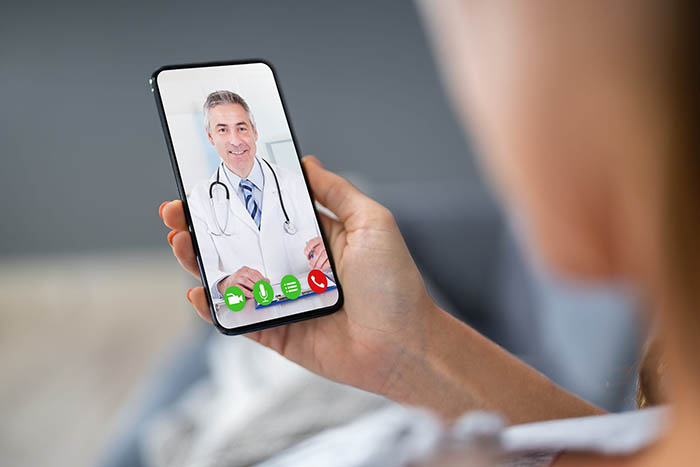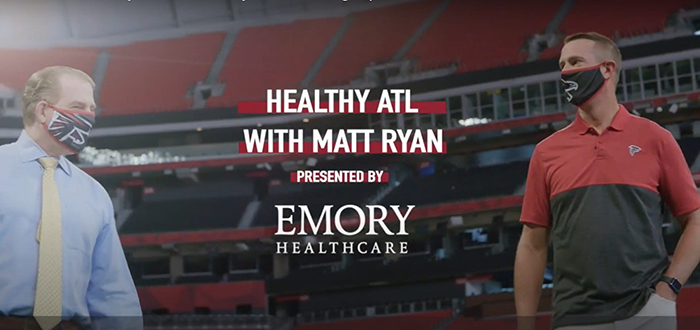Telehealth was not utilized at Emory before COVID-19 mostly because of legislation and rules that facilitated its use only in specific circumstances. As those requirements were lifted and more patients were looking for ways to see their providers, telehealth visits skyrocketed.
Before COVID-19, the number of telehealth visits at Emory Healthcare was barely noticeable. By May 2020, Emory doctors and advanced practice providers completed over 50,000 video visits. The trend has been maintained almost a year later: telehealth continues to be a popular option for many patients. There are roughly 40,000 telehealth visits each month — even as restrictions lift, COVID-19 cases go down and more and more individuals are resuming their new normal.
Fortunately, Emory Healthcare was well-positioned to meet this rising demand. Rob Sweeney, MBA, administrator for Emory Telehealth, had already been hard at work, alongside a team that included project manager Emma Winchell, information technology team members, and Elizabeth Krupinski, PhD, a national telehealth subject matter expert. In short order, they developed the systems and approaches necessary for a successful telehealth practice.
“At Emory, we leveraged foundational work earlier in the year and quickly ramped up during the pandemic,” Sweeney explains. “We were in constant communication, talking with providers, sharing best practices, and listening to feedback on how we could improve the process and experience for our clinicians and patients.”
Communication, Sweeney believes, is at the heart of why the Emory team was so successful in meeting patient demand and providing outstanding care over a computer, laptop, tablet, or smartphone.
Not only were patients just as satisfied with their telehealth experience as in-person visits, but providers were also able to continue care and make an impact on the health and well-being of many individuals:
- A primary care provider identified a change in a patient with lung cancer that required immediate, emergency treatment.
- A high-risk, immunocompromised patient was able to continue care at home with telehealth, which reduced her risk of contracting COVID-19 and even led to her improved health and function.
- A dermatologist was able to quickly see a patient experiencing a bad flare of his skin disease and was able to recommend a course of treatment to begin the next day.
- An oncologist was able to walk a newly diagnosed patient and his wife through treatment options and answer all their questions thoroughly and compassionately during a telehealth visit.
While telehealth visits may reduce in number as COVID-19 cases continue to drop and patients resume in-person care, experts anticipate telehealth to remain a popular healthcare offering. That’s true at Emory Healthcare as well.
“Telehealth offers so many benefits to our patients and providers,” states Dr. Esper. “Patients don’t need to even leave their homes — something that can be challenging for some even outside a global pandemic, like those with multiple sclerosis, Parkinson’s disease or heart failure. Telehealth appointments are extremely efficient; patients wait an average of a little over two minutes to see their provider during a virtual visit. You can also involve relatives in another state to review treatment plans and recommendations.”
“You can do so much over telehealth — things that we wouldn’t have thought possible just over a year ago. It truly has allowed us to evolve and improve our offerings to our patients and the community,” he concludes.




